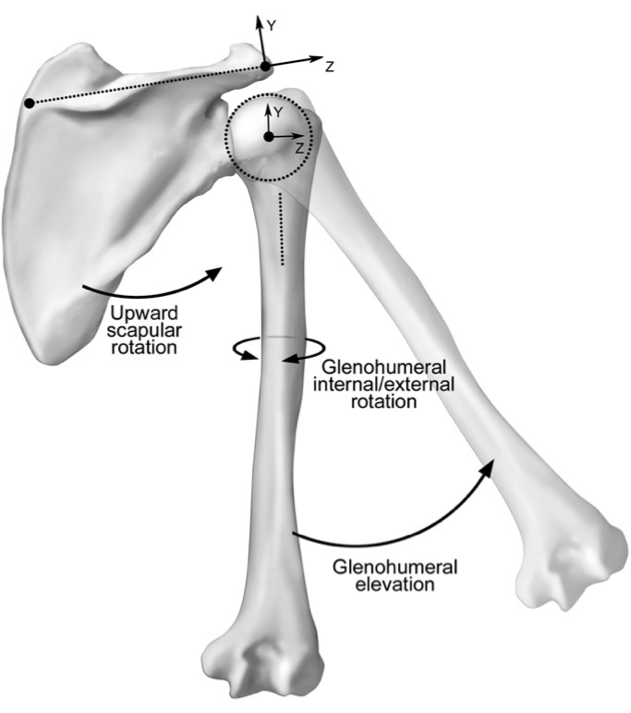The shoulder blade and upper arm bone move together to produce a variety of arm and hand movements essential for life and sport. Proper movement of the shoulder blade is required to produce normal mechanics at the joint surfaces and maintain the length and function of the shoulder blade and shoulder muscles. Abnormal mechanics between these bones has been noted in many upper body conditions including neck pain, shoulder impingement, and rotator cuff injuries. It is currently not known if these abnormal mechanics are the cause or result of pain. In addition, we often see poor mechanics in individuals who do not have any shoulder symptoms.
Researchers and clinicians have blamed a patient’s poor mechanics on a lack of shoulder blade strength. For example, those patients with weakness will have poor mechanics and in turn will respond well to a strengthening program. Similar to what Physical Therapists find in patients with knee pain, often poor mechanics are found in patients with good strength. These patients often respond better to coordination or motor control exercises instead of a program focused on strength development.
A recent research study by Hannah et al. confirmed this discrepancy between strength and shoulder blade mechanics (International Journal of Sports Physical Therapy, 2017). The researchers recruited 40 college participants of which 27 (68%) demonstrated poor scapular mechanics. The participants’ strength assessments were compared to their age matched peers with good mechanics. The authors found no significant differences between those with normal or poor shoulder blade mechanics. A limitation of this study was its’ testing of only healthy patients. It is not known if this study would hold up in a population of patients with shoulder pain or injury.
Patient’s with shoulder pain and poor mechanics must be assessed for strength and control to determine the most appropriate treatment plan. To learn more about how you can improve your strength and shoulder mechanics contact your local Physical Therapist.

